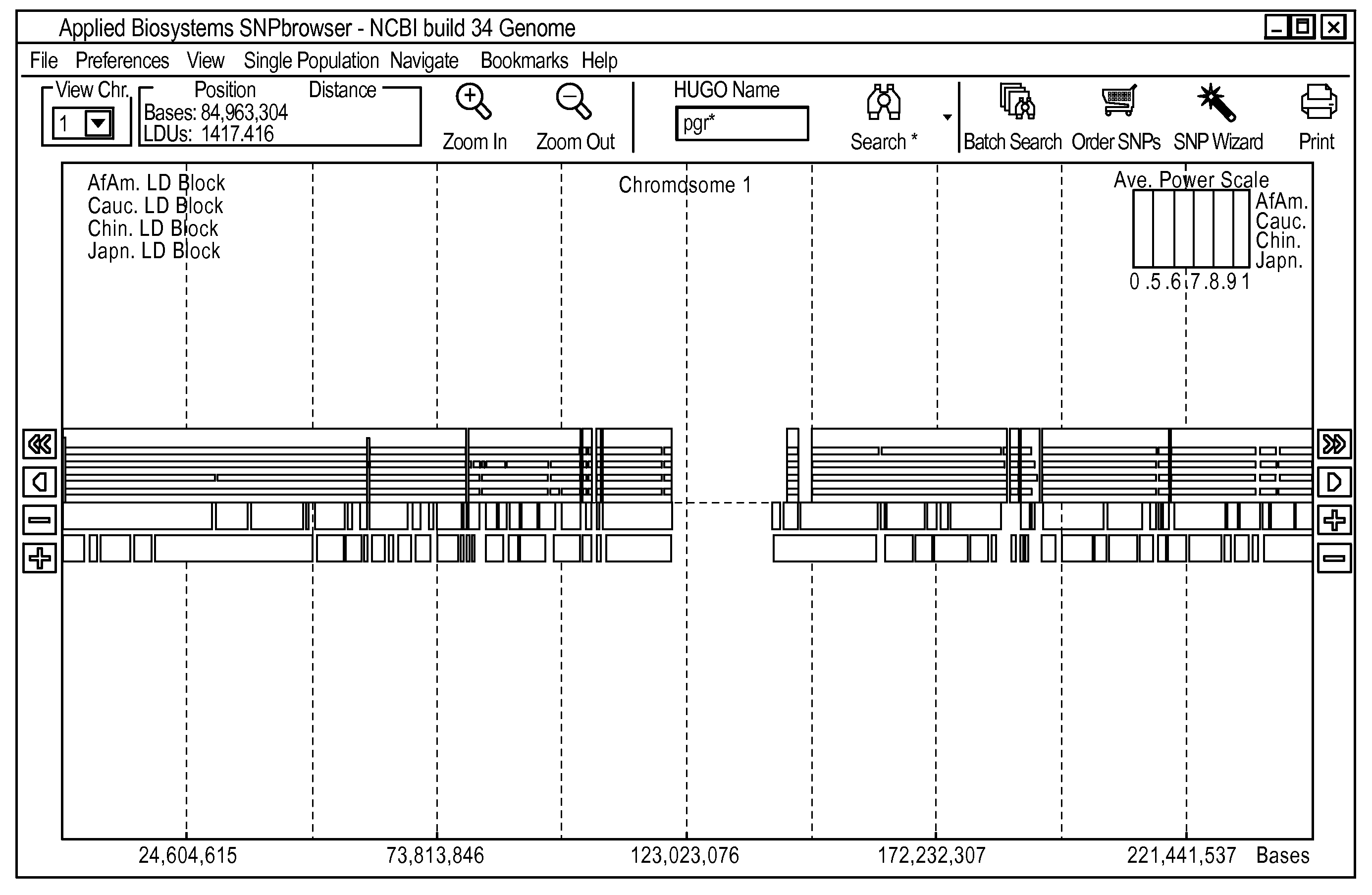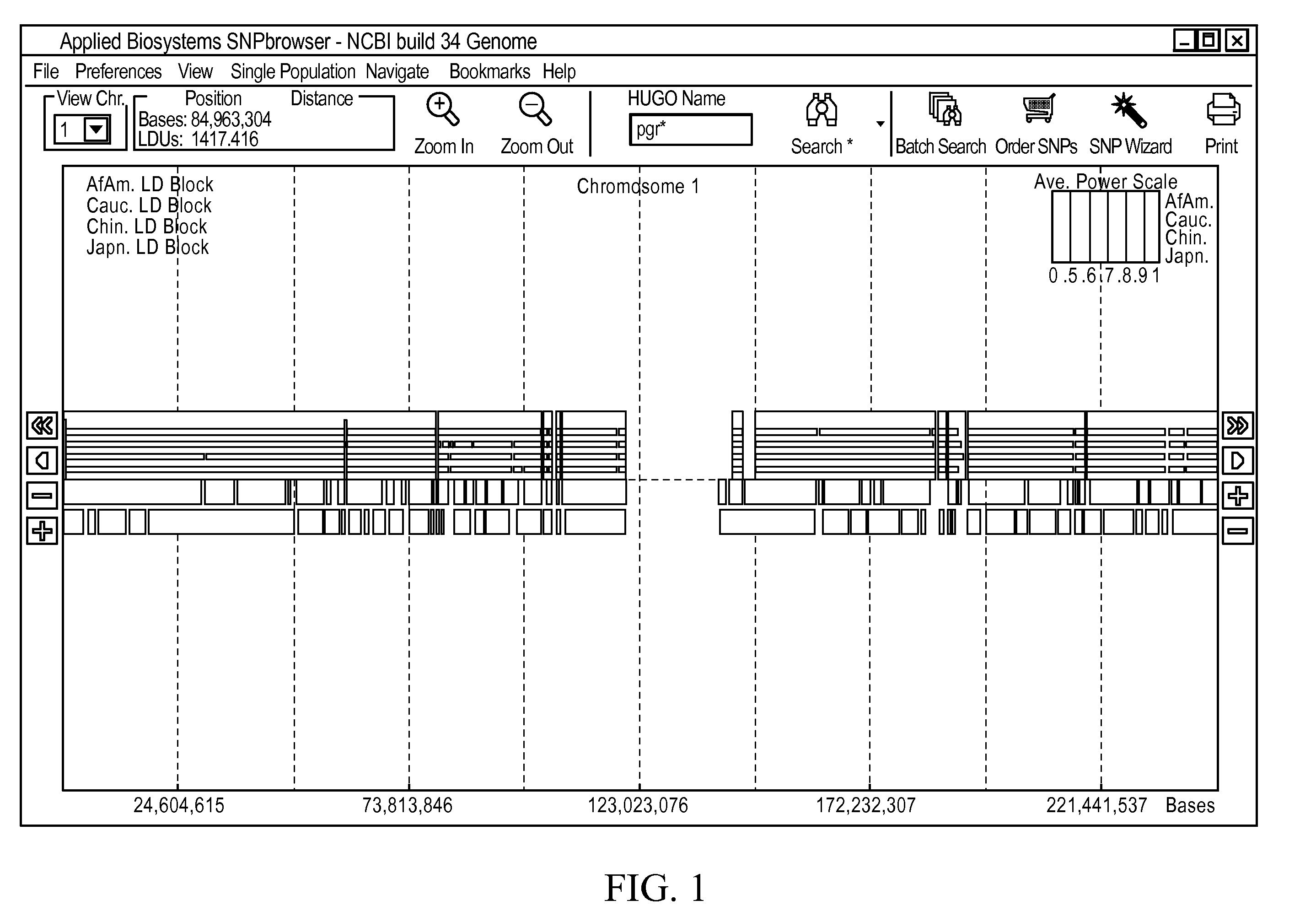Methods and Workflows for Selecting Genetic Markers Utilizing Software Tool
a software tool and workflow technology, applied in the field of methods and workflows for selecting genetic markers utilizing software tools, can solve the problems of not all candidate polymorphisms are suitable for selection as markers in genetic studies and for the development of genotyping assays, and the genome may lack a sufficient number of validated snps, so as to facilitate the selection of snps and facilitate the tagging of snps
- Summary
- Abstract
- Description
- Claims
- Application Information
AI Technical Summary
Benefits of technology
Problems solved by technology
Method used
Image
Examples
Embodiment Construction
[0042]To simplify the complexity of selecting the appropriate SNP markers for genetic studies, we have developed a software tool we call the SNPbrowser. SNPbrowser is a tool to assist in the knowledge-based selection of markers for association studies. SNPbrowser may be implemented as a software tool that integrates all data and methodologies discussed above and that permits visualization of all relevant data points as well as the empirically observed LD. The basic visualization strategies utilized by SNPbrowser to present the locations of the SNPs, genes, LD maps, LD / haplotype blocks, the results of power calculations, as well as the basic features of the user interface and search and navigation facilities (FIG. 1), are further discussed in U.S. patent application Ser. No. 10 / 833,000, entitled “Methodology and Graphical User Interface to Visualize Genomic Information, which is hereby incorporated by reference.
[0043]In the present teachings, we further devise a number of SNP selecti...
PUM
 Login to View More
Login to View More Abstract
Description
Claims
Application Information
 Login to View More
Login to View More - R&D
- Intellectual Property
- Life Sciences
- Materials
- Tech Scout
- Unparalleled Data Quality
- Higher Quality Content
- 60% Fewer Hallucinations
Browse by: Latest US Patents, China's latest patents, Technical Efficacy Thesaurus, Application Domain, Technology Topic, Popular Technical Reports.
© 2025 PatSnap. All rights reserved.Legal|Privacy policy|Modern Slavery Act Transparency Statement|Sitemap|About US| Contact US: help@patsnap.com



